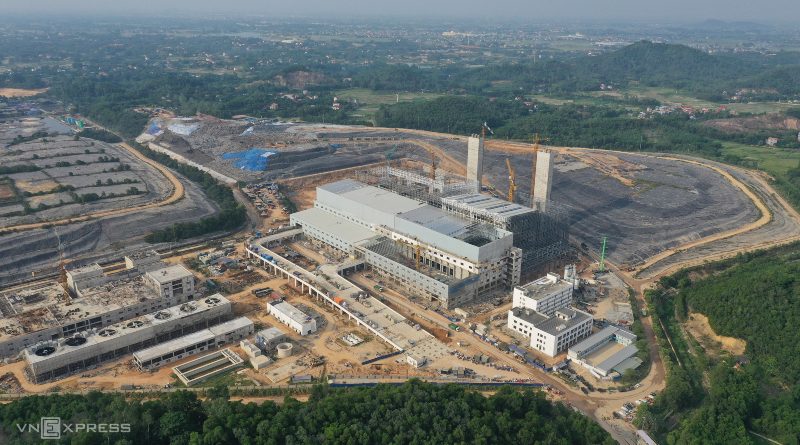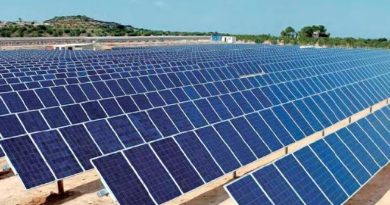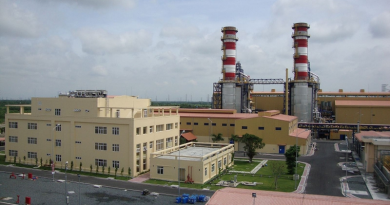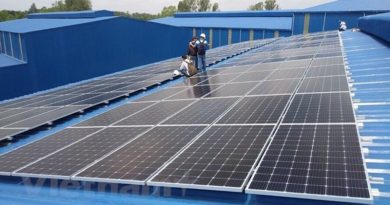A plant to generate electricity from waste in Hanoi, with a capacity of handling 4,000 tons of solid refuse per day, will start operating this September.

|
|
The Soc Son Waste-to-Energy (WTE) project in Nam Son Waste Treatment Complex was approved by Hanoi’s administration in late 2017 with a total investment of VND7 trillion ($303 million).
Once completed, it will be the largest in Vietnam and the second largest in the world with a capacity of handling 4,000 tons of dry solid waste per day. The project’s investor is Hanoi-based Thien Y Environmental Energy JSC and its contractor, Chinese Metallurgical Group Corporation General Contractor MCC (China).
Currently, the biggest WTE project in the world is in Shenzhen, China, with a capacity of 5,000 tons per day.
|
 |
|
The entrance to the facility has five weighbridges. Once arriving, garbage trucks would stop to be weighed before entering the landfill.
On May 28, the plant received its first garbage trucks passing through the weighing station, officially operating the first phase of receiving and treating garbage after 21 months of construction.
For now, the project will continue to be adjusted in terms of technique. When in operation, it is expected to receive 450-500 garbage trucks daily.
|
 |
|
Staff monitor arriving garbage trucks. Each truck will be equipped with an electronic chip and an access card. The card carries information about the garbage receiving locality, driver, number plate, and transport unit.
|
 |
|
The factory has 16 doors suited to different types of garbage trucks currently used in Vietnam.
|
 |
|
An overhead crane operates along rails and has extended arms to mix trash and deliver waste from the storage tank into the incinerator.
It is expected that with 4,000 tons of waste incinerated each day, 75 MW of power will be generated. Of that sum, the plant will consume 15-20 percent and sell the rest to Vietnam Electricity Corporation (EVN), the country’s sole power distributor.
The plant has five incinerators and three generator sets.
“Under favorable conditions, the plant will generate electricity after 15 days of burning waste. It is expected all three generators will operate at once in November this year,” said Li Ai Jun, deputy general director of Thien Y Environmental Energy.
|
 |
|
A garbage tank that can hold thousands of tons of trash at once. When put into operation, it will be completely closed.
Garbage coming here will be kept for about 10 days, then transferred to the incinerator. A ventilation fan circulates air in one direction so the odor does not leak.
|
 |
|
Hanoi is currently using 10 types of garbage trucks of different sizes and loading capacities but as regulated by the WTE plant, each truck must go in, drop the garbage and go out within three minutes.
|
 |
|
Workers install the electricity system inside the plant.
|
 |
|
Work to install the incinerator system and related equipment is underway.
After entering the incinerator, garbage will be burned to generate waste heat and ash at the bottom of the furnace. The ash will be used as a raw material for the production of building materials, while the heat is transferred to the generator turbine to produce electricity.
|
 |
|
It is expected that on Sept. 5, the plant will start running on a pilot scheme for 25 days before it officially enters operation.
The project has been delayed several times.
In 2019, the company had promised city authorities it would finish the plant in August 2020, and that commercial operation could begin two months later.
But the firm said last year it would be unable to meet the schedule since Chinese contractor Metallurgical Group Corporation was not allowed to bring experts to Vietnam due to the pandemic, and that completion would now be in November 2020.
In March, investor spokesperson Nguyen Thi Hong Van asked for another delay until May.
|
 |
|
The wastewater treatment plant is designed to treat 1,740 tons of wastewater per day and is expected to be completed in August.
|
 |
|
According to the Hanoi Department of Construction, the city currently discharges 6,000 tons of waste each day. Most of the volume is buried at Nam Son Waste Treatment Complex.
It is hoped the Soc Son WTE project would reduce pollution that for years has affected daily life in the capital.
In recent years, the Nam Son complex has been in the news several times for a long-running dispute over land compensation that repeatedly caused local residents to block entry to it, resulting in trash piling up around the city.
|
Source : https://e.vnexpress.net/



















